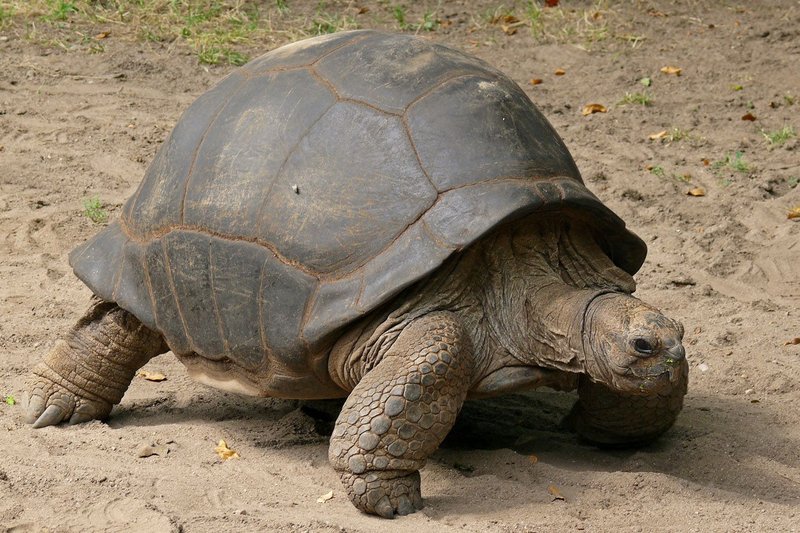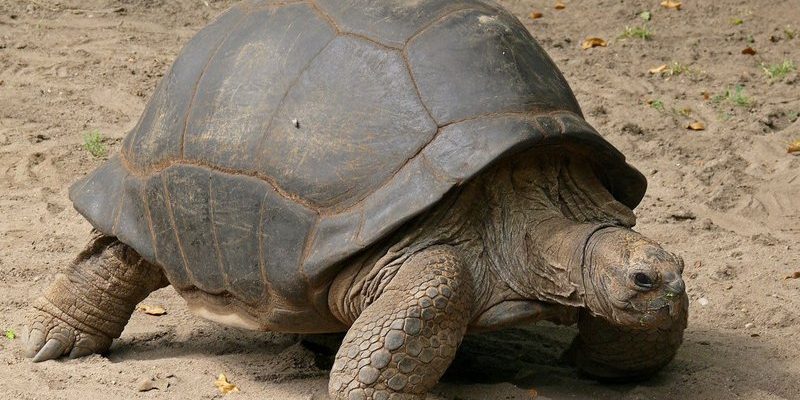
Imagine you’re on a tropical island. The sun is shining, the ocean is a brilliant blue, and you’re on the lookout for these magnificent creatures. Identifying an Aldabra giant tortoise in the wild can feel a bit like a treasure hunt. You need to know what you’re searching for. In this guide, I’ll walk you through the key characteristics of Aldabra giant tortoises, their habitats, behaviors, and some nifty tips to help you spot them easily.
Understanding the Aldabra Giant Tortoise
The Aldabra giant tortoise is one of the largest tortoise species. These impressive creatures can weigh up to 550 pounds and measure as much as 4 feet in length. They’re often compared to their more famous relative, the Galápagos tortoise, which also shares a penchant for a slow pace and longevity. However, what sets the Aldabra apart is its unique shell shape and slightly different proportions.
Their shells, or carapaces, are dome-shaped and can be quite striking, with a beautiful grayish to brown coloration. This not only helps them blend into their environment but also protects them from potential predators. It’s worth noting that the size and shape of their shell can vary slightly depending on their age, diet, and habitat, which makes each tortoise a bit unique.
You might wonder why these tortoises matter. They play a crucial role in their environment by helping to maintain plant diversity. Their grazing habits influence the growth patterns of the vegetation around them. So, spotting one isn’t just a fun adventure; it’s a glimpse into a vital part of the ecosystem.
Physical Characteristics to Look For
To spot an Aldabra giant tortoise in the wild, you first need to know what they look like. Here are the key physical traits that can help you identify them:
- Size: As mentioned earlier, these tortoises are massive. If you see a large, slow-moving creature that looks like a giant rock, it’s likely an Aldabra giant tortoise.
- Shell Shape: Their dome-shaped shells are a hallmark characteristic. Unlike more flattened tortoises, the Aldabra’s shell is rounded, which gives it a distinctive profile.
- Color: Their shells usually have a grayish or brown hue. Sometimes, you might even notice a little texture that can help you differentiate them from other species.
- Limbs: Look for sturdy, column-like legs with scaly skin. These large legs help them support their hefty bodies as they move slowly across the terrain.
If you see something that fits this description, you might just be looking at an Aldabra giant tortoise! Remember, they can often be mistaken for rocks or even large tree stumps due to their slow movement and the way they blend into their surroundings.
Behaviors of the Aldabra Giant Tortoise
Understanding the behaviors of the Aldabra giant tortoise can greatly enhance your chances of spotting them. Here are some behaviors to observe:
- Grazing: These tortoises are herbivores and mainly eat grasses, leaves, and fruits. If you see a large creature munching away on vegetation, it’s likely an Aldabra tortoise enjoying a meal.
- Sunbathing: Aldabra giant tortoises love basking in the sun. Look for them lying flat with their legs extended, soaking up the rays. This is essential for their metabolism and helps them regulate their body temperature.
- Social Interactions: While they are mostly solitary creatures, you might spot a couple of them interacting. They don’t often fight, but they do engage in touching behaviors that can be fascinating to watch.
In the wild, you might hear them making low grunting sounds or see them interacting with their environment in subtle ways. Pay attention to these behaviors; they can give you clues about the presence of these magnificent tortoises.
Habitat and Where to Spot Them
Aldabra giant tortoises are primarily found on the Aldabra Atoll, which is a UNESCO World Heritage site. However, they can also be seen in captivity in various zoos and wildlife reserves. If you’re on the lookout in the wild, here’s what to keep in mind:
- Island Ecosystem: Love coastal habitats? The Aldabra Atoll features a mix of shoreline, savanna, and mangroves. These diverse environments are perfect for tortoises to thrive.
- Dry Grasslands: In the dry season, tortoises are often spotted in the grasslands and scrub areas. They prefer open spaces where they can graze easily.
- Water Sources: Tortoises often congregate near freshwater sources. Keep an eye out for ponds or marshy areas, especially during the dry months.
So, if you’re planning an adventure to the Aldabra Atoll, keep these habitats in mind. They can significantly increase your chances of encountering one of these gentle giants.
Tips for Observing Aldabra Giant Tortoises
If you’re lucky enough to be in their natural habitat, here are a few tips for observing Aldabra giant tortoises without disturbing them:
- Stay Quiet: These tortoises can be sensitive to noise. Keep your voice down and move slowly to avoid startling them.
- Use Binoculars: Maintain a respectful distance. Using binoculars can help you observe their behaviors without getting too close.
- Visit During Feeding Times: Early morning or late afternoon are prime times to spot them while they’re grazing.
Remember that patience is key. Just like a tortoise, take your time, and enjoy the experience.
Conservation Efforts and Why They Matter
The Aldabra giant tortoise is not only fascinating but also essential for biodiversity. Unfortunately, they face threats from habitat loss and climate change. However, there are several conservation efforts underway to protect these incredible creatures:
- Protected Areas: The Aldabra Atoll is a designated marine reserve, which helps protect the tortoises along with their ecosystem.
- Breeding Programs: Conservationists are engaged in breeding programs to ensure the survival of the species and to maintain genetic diversity.
- Research and Monitoring: Ongoing research helps scientists understand their behaviors, track populations, and develop effective conservation strategies.
By learning about these magnificent creatures and advocating for their protection, you can play a part in ensuring they continue to thrive in the wild.
Finding and identifying an Aldabra giant tortoise in the wild can be an unforgettable experience. With their impressive size, unique characteristics, and vital role in their ecosystem, these tortoises are worth looking for. Whether you’re strolling along grassy shores or watching them graze peacefully, knowing what to observe can transform your adventure into a memorable encounter. So, pack your binoculars, respect their space, and enjoy the journey as you search for these gentle giants in their natural habitat. Happy tortoise spotting!

